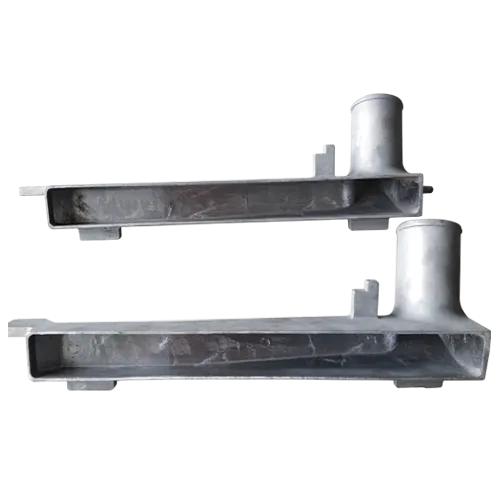Mobile:+86-311-808-126-83
Email:info@ydcastings.com
A Guide to Successfully Casting Aluminum at Home and in Workshops
How to Cast Aluminum A Comprehensive Guide
Aluminum casting is a popular method used in manufacturing to create complex shapes and components with high precision. This process takes advantage of aluminum's lightweight, corrosion-resistant properties, making it a preferred choice in various industries, from automotive to aerospace. Here’s a comprehensive guide to help you understand the steps involved in casting aluminum, along with tips to ensure a successful outcome.
Understanding Aluminum Casting Techniques
Before diving into the casting process, it’s essential to be familiar with the different techniques used in aluminum casting. The most common methods include
1. Sand Casting This is a traditional method where a sand mold is created, and molten aluminum is poured into the cavity. It’s suitable for low-volume production and is cost-effective.
2. Die Casting In this process, molten aluminum is injected into a metal mold under high pressure. Die casting is ideal for producing large quantities of precise parts.
3. Permanent Mold Casting This method uses a reusable mold, allowing for better surface finish and dimensional accuracy. It’s typically used for medium production runs.
4. Investment Casting Also known as lost-wax casting, this method creates intricate shapes and is excellent for complex geometries, albeit at a higher cost.
Materials and Equipment Needed
To successfully cast aluminum, gather the following materials and equipment
- Aluminum Alloy Determine the type of aluminum alloy needed for your project, such as 356 or 319, based on the desired mechanical properties
.- Melting Furnace Choose a furnace capable of reaching the melting point of aluminum (about 660°C or 1220°F). Electric induction furnaces are commonly used for their efficiency and control.
- Molds Depending on the chosen casting method, prepare sand molds, metal molds, or invest in patterns for investment casting.
- Safety Gear Always wear appropriate safety gear, including heat-resistant gloves, goggles, and protective clothing, to protect yourself from molten metal spills and fumes.
how to cast aluminum

The Casting Process
Here’s a step-by-step guide to the aluminum casting process
1. Design the Mold Create a mold design based on your desired component shape. Ensure that the mold includes appropriate gating systems and vents to allow for proper metal flow and gas escape.
2. Prepare the Mold For sand casting, compact the sand around the pattern to create a mold. If using a metal mold for die casting, ensure it is clean and preheated to prevent the aluminum from cooling too rapidly on contact.
3. Melt the Aluminum Charge the furnace with the aluminum alloy and heat it until it melts completely. Monitor the temperature closely to avoid overheating, which can alter the alloy’s properties.
4. Pour the Molten Aluminum Carefully pour the molten aluminum into the prepared mold. If using sand casting, ensure a steady pour to minimize turbulence, which can lead to defects.
5. Cooling Allow the aluminum to cool and solidify. The cooling time will vary based on the thickness of the casting and the method used. Do not rush this process, as rapid cooling may induce stresses or cracks.
6. Remove the Casting Once the aluminum has cooled, carefully remove the casting from the mold. For sand casting, break away the sand, and for die casting, operate the machine to eject the component.
7. Finishing Touches Trim any excess material and perform necessary finishing operations, such as sanding, grinding, or machining, to achieve the desired surface quality and dimensions.
Quality Control and Testing
After casting, it’s critical to conduct quality control checks. Inspect the casting for defects such as cracks, porosity, and dimensional accuracy. Visual inspections, as well as more sophisticated testing methods like ultrasonic or X-ray inspection, can help ensure that the casting meets required specifications.
Conclusion
Casting aluminum is a versatile and efficient method of manufacturing components that can meet precise specifications for a range of applications. By understanding the techniques involved and following the outlined steps, you can achieve high-quality castings that harness the beneficial properties of aluminum. Whether you’re a hobbyist or a professional, mastering aluminum casting can open up numerous possibilities for innovative design and production.
-
Why Should You Invest in Superior Pump Castings for Your Equipment?NewsJun.09,2025
-
Unlock Performance Potential with Stainless Impellers and Aluminum End CapsNewsJun.09,2025
-
Revolutionize Your Machinery with Superior Cast Iron and Aluminum ComponentsNewsJun.09,2025
-
Revolutionize Fluid Dynamics with Premium Pump ComponentsNewsJun.09,2025
-
Optimizing Industrial Systems with Essential Valve ComponentsNewsJun.09,2025
-
Elevate Grid Efficiency with High-Precision Power CastingsNewsJun.09,2025











